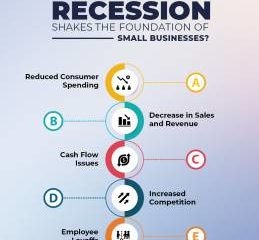Politics
How to Create a Non-Fungible Token – An ultimate Guide
Published
3 years agoon
By
Drew Simpson
The world of Non-Fungible Tokens (NFTs) offers a golden opportunity for entrepreneurs to maximize the traction of their business. They have a soaring market capitalization of $22.25 billion and a daily trading volume of $2.68 billion, according to CoinMarketCap.com. Hence, trading in crypto collectibles is a profitable investment. We cannot wait to unveil the same! So, stay glued to know more about Non-Fungible Token Development.
What is a Non-Fungible Token (NFT)?
It is a unique kind of crypto collectible with characteristics like immutability and non-interchangeability. NFTs are created on blockchain networks like Binance Smart Chain, Cardano, Cosmos, Ethereum, EOS, Flow, Polkadot and TRON.
What has contributed to the increasing popularity of Non-Fungible Token Development?
Millions of dollars are being earned by artists, content creators, fashion designers, game developers, filmmakers, meme creators, photographers, and sportspersons by selling their work for a high value in numerous NFT marketplaces. The crypto-collectibles are getting aggressive bidding from interested investors leading to a spike in their selling price.
Some big players like Binance, BuyuCoin, Collectible, eBay, Fox, Light Media, NewAuction (NAU), NFTmall, Rowket Market, Ticketmaster, VANCAT, and xSigma have also announced the launch of their own NFT selling platforms in the future. This will lead to heavy competition in the crypto industry.
Additionally, the NFTs have also eliminated the cumbersome role of middlemen/intermediaries in the system. Content creators can set their own price for the work without paying a brokerage or commission to anyone.
The step-by-step process to create a Non-Fungible Token (NFT)
- Ideally, the artists and designers should develop their NFTs – on the robust Ethereum blockchain network. It has a sturdy framework and supports different Dapps and DeFi projects.
- The content creators have to follow the guidelines – and rules of the ERC-721 and ERC-1155 Non-Fungible Token standards.
- ERC-721 implements an API – for all the tokens held in the secure smart contracts. It contains details like the token ID and the unique token pair address.
- ERC-1155 is a multi-token standard – where each NFT has its own metadata and supply. It consists of different rules of token transfer (single and batch).
- They have to set up a crypto-compatible digital wallet – like Coinbase wallet, MetaMask, MyEtherWallet, and Trust wallet.
- The artists who possess fiat currency can convert them – into Ether (ETH) cryptocurrency by registering on Binance and Coinbase.
- The content creators will undergo KYC/AML verification – while registering on the NFT marketplace.
- They need to link their digital wallets – on the NFT marketplace by entering details like the Etherum wallet number and total funds kept in it.
- Some of the popular Ethereum-supported – crypto collectible selling platforms are Mintable.app, OpenSea, and Rarible.
- They need to upload their unique work – in the form of images (JPEG) and videos (Mp3 and Mp4) on the NFT marketplace.
- The online platform will automatically mint – the valuable NFT.
- The creator can add details like – accepted payment methods, banner image, description, and price for their digital collectible.
- The NFT is listed – on the online marketplace for sale.
- Once the crypto collectible has been sold – to an investor, the content creators have to pay off different expenses like auction fees, a commission on the sale, minting charges, and transaction processing fees to the NFT marketplace.
What are some popular examples of NFTs?
THETA
Unquestionably, it has the largest market cap of $8.46 billion and a total supply of 1 billion. THETA is a 100% decentralized video streaming network launched in 2018. The content creators will earn more revenue from the THETA native crypto token through peer-to-peer (P2P) transactions. Apart from this, the viewers of videos will get rewards from Theta Fuel (TFUEL) tokens.
Chiliz (CHZ)
Priced at only $0.36, the Chiliz NFT has the second-largest market capitalization ($2.14 billion) in the industry. CHZ acts as a digital currency for the entertainment and sports industries.
The fans can purchase the Chiliz crypto collectible and get benefits like decision-making powers and voting rights. Finally, the users can buy them from exchanges like Binance, Bitpanda, HBTC and Mercado.

Decentraland (MANA)
The MANA NFT costs only $0.97. It has a daily trading volume of $254.14 million with a total supply of 1.58 billion. The Decentraland (MANA) NFT is created on the Ethereum-based smart contract.
Investors can use NFTs to play interactive games, purchase virtual property, and also experience 3D and Virtual Reality (VR). The buyers can also purchase the LAND tokens with MANA. The Decentraland gameworld acts as an enormous Metaverse that increases revenue for content creators.
Investors earn high returns by monetizing their LAND tokens through advertising, leasing, and offering paid experiences to other users on the platform.
Different use-cases of NFTs
Digital collectibles are sold through artwork, domain names, fashion accessories, games, metaverses, memes, music, photos, software licenses, sports goods, trading cards, tweets, videos, and virtual property in the market.
Crypto collectibles are also heavily influencing different industries like e-commerce, entertainment, gaming, social media, and sports.
Why is it the perfect time to enter the NFT market now?
According to Non-Fungible.com, NFT sales have reached a humongous value of $30.53 million with 10311 primary and 7930 secondary sales in the market. There are a whopping 705,691 different crypto-collectibles, according to data given by CoinRanking.com.
More auction houses, art galleries, B2B ventures, celebrities, crypto exchanges, e-commerce platforms, entertainment firms, gaming companies, and sports teams are also launching their brand new NFT marketplaces. Above all, it indicates a high level of interest and the opportunity to make a huge profit.
Venture capitalists (VCs) are also supporting the business ideas of innovative entrepreneurs due to the favorable market conditions for the trading of NFTs on online platforms.

How to earn a large amount of revenue from Non-Fungible Tokens (NFTs)?
The buyers of Non-Fungible Tokens (NFTs) can make a hefty profit by selling them in different secondary markets. Also, the sellers of crypto-collectibles get income from numerous sources like sales (primary, secondary, and private) and royalty for every resale.
Entrepreneurs who own the NFT marketplaces earn their income from bidding fees, initial setup charges, listing fees, minting charges, selling multiple digital collectibles simultaneously, and transaction processing charges.
How do NFTs impact the environment?
Non-Fungible Tokens generate a lot of carbon emissions when they are minted on numerous blockchain networks. Nonetheless, NFT marketplaces are attempting to use renewable energy for supplying electricity to the miners.
Hence, entrepreneurs must reduce the energy consumption during bidding, canceling, sales, and transfer of ownership of NFTs.
Nifty Gateway, a premier NFT marketplace, has announced plans to become carbon negative by upgrading its technology. Artists and investors can know their carbon emissions from their Ethereum wallets by using a tool made by Offsetra.
What is the solution for NFT marketplaces to decrease energy consumption?
Furthermore, the usage of computational energy will reduce by a significant 99% once Ethereum makes a full switch from the Proof of Work (PoW) to the Proof of Stake (PoS) consensus mechanism on its new Ethereum 2.0 version. Subsequently, other alternatives like side chains (Palm) and Layer 2 transactions can also reduce the overall impact on the environment.
Know the different marketplaces for buying and selling NFTs
The top NFT marketplaces by sales are CryptoKitties, Sorare, Ethereum Name Service (ENS), Decentraland, and MegaCryptoPolis. Without a doubt, the popular NFT marketplaces in terms of trading volume are Decentraland, Sorare, CryptoPunks, Meebits, and SuperRare. Entrepreneurs can create a new NFT Marketplace platform like the top NFT marketplaces.
The most expensive NFTs sold in the market were CryptoPunks collection of Portraits ($16.9 million), Death Dip ($1.79 million on SuperRare), Metarift ($905,236 on MakersPlace), Reflection ($869,487 on SuperRare), Noriko Soramoto ($618,575 on Rarible), and GOAT ($597,142 on MakersPlace).
Wrapping Up
Undoubtedly, 2021 will see new NFT projects and new records in the crypto industry. A new revenue-sharing agreement has come out in the market due to NFTs. Additionally, the future of crypto-collectibles will depend on copyright infringement, duplication, and taxation laws related to trading and transactions.
In contrast to building crypto-collectibles from scratch, entrepreneurs can reach out to a highly skilled Non-Fungible Token development company and make it big in the thriving market.
They can get services like the creation of ERC-721 and ERC-1155 based-NFTs white-label clone solutions of NFT marketplaces, onboarding of prospective investors, integration of digital wallets, and NFT marketing. Hence, progressive entrepreneurs can move forward in the industry by initiating Non-Fungible Token development.
Jennifer Atkinson
Chief Technical Writer
Jennifer is an America-based chief technical writer at Appdupe, who has got the buzz of every faddish development in the technology and app development sector. Her verdict about presenting quick-witted solutions to the current issues and being enigmatic about future trends has led her to become the wizard in her field.
You may like
-


Google DeepMind’s new AI tool helped create more than 700 new materials
-


Your guide to talking about climate tech over the holidays
-


Building Responsive Layouts for iOS Apps: A Step-by-Step Guide
-


A Disney director tried—and failed—to use an AI Hans Zimmer to create a soundtrack
-


A Guide to Grow Your Tech Startup
-


Adapt, Innovate, Succeed: A Guide To Recession-Proofing Your Small Business
Politics
Fintech Kennek raises $12.5M seed round to digitize lending
Published
7 months agoon
10/11/2023By
Drew Simpson
London-based fintech startup Kennek has raised $12.5 million in seed funding to expand its lending operating system.
According to an Oct. 10 tech.eu report, the round was led by HV Capital and included participation from Dutch Founders Fund, AlbionVC, FFVC, Plug & Play Ventures, and Syndicate One. Kennek offers software-as-a-service tools to help non-bank lenders streamline their operations using open banking, open finance, and payments.
The platform aims to automate time-consuming manual tasks and consolidate fragmented data to simplify lending. Xavier De Pauw, founder of Kennek said:
“Until kennek, lenders had to devote countless hours to menial operational tasks and deal with jumbled and hard-coded data – which makes every other part of lending a headache. As former lenders ourselves, we lived and breathed these frustrations, and built kennek to make them a thing of the past.”
The company said the latest funding round was oversubscribed and closed quickly despite the challenging fundraising environment. The new capital will be used to expand Kennek’s engineering team and strengthen its market position in the UK while exploring expansion into other European markets. Barbod Namini, Partner at lead investor HV Capital, commented on the investment:
“Kennek has developed an ambitious and genuinely unique proposition which we think can be the foundation of the entire alternative lending space. […] It is a complicated market and a solution that brings together all information and stakeholders onto a single platform is highly compelling for both lenders & the ecosystem as a whole.”
The fintech lending space has grown rapidly in recent years, but many lenders still rely on legacy systems and manual processes that limit efficiency and scalability. Kennek aims to leverage open banking and data integration to provide lenders with a more streamlined, automated lending experience.
The seed funding will allow the London-based startup to continue developing its platform and expanding its team to meet demand from non-bank lenders looking to digitize operations. Kennek’s focus on the UK and Europe also comes amid rising adoption of open banking and open finance in the regions.
Featured Image Credit: Photo from Kennek.io; Thank you!
Radek Zielinski
Radek Zielinski is an experienced technology and financial journalist with a passion for cybersecurity and futurology.
Politics
Fortune 500’s race for generative AI breakthroughs
Published
7 months agoon
10/11/2023By
Drew Simpson
As excitement around generative AI grows, Fortune 500 companies, including Goldman Sachs, are carefully examining the possible applications of this technology. A recent survey of U.S. executives indicated that 60% believe generative AI will substantially impact their businesses in the long term. However, they anticipate a one to two-year timeframe before implementing their initial solutions. This optimism stems from the potential of generative AI to revolutionize various aspects of businesses, from enhancing customer experiences to optimizing internal processes. In the short term, companies will likely focus on pilot projects and experimentation, gradually integrating generative AI into their operations as they witness its positive influence on efficiency and profitability.
Goldman Sachs’ Cautious Approach to Implementing Generative AI
In a recent interview, Goldman Sachs CIO Marco Argenti revealed that the firm has not yet implemented any generative AI use cases. Instead, the company focuses on experimentation and setting high standards before adopting the technology. Argenti recognized the desire for outcomes in areas like developer and operational efficiency but emphasized ensuring precision before putting experimental AI use cases into production.
According to Argenti, striking the right balance between driving innovation and maintaining accuracy is crucial for successfully integrating generative AI within the firm. Goldman Sachs intends to continue exploring this emerging technology’s potential benefits and applications while diligently assessing risks to ensure it meets the company’s stringent quality standards.
One possible application for Goldman Sachs is in software development, where the company has observed a 20-40% productivity increase during its trials. The goal is for 1,000 developers to utilize generative AI tools by year’s end. However, Argenti emphasized that a well-defined expectation of return on investment is necessary before fully integrating generative AI into production.
To achieve this, the company plans to implement a systematic and strategic approach to adopting generative AI, ensuring that it complements and enhances the skills of its developers. Additionally, Goldman Sachs intends to evaluate the long-term impact of generative AI on their software development processes and the overall quality of the applications being developed.
Goldman Sachs’ approach to AI implementation goes beyond merely executing models. The firm has created a platform encompassing technical, legal, and compliance assessments to filter out improper content and keep track of all interactions. This comprehensive system ensures seamless integration of artificial intelligence in operations while adhering to regulatory standards and maintaining client confidentiality. Moreover, the platform continuously improves and adapts its algorithms, allowing Goldman Sachs to stay at the forefront of technology and offer its clients the most efficient and secure services.
Featured Image Credit: Photo by Google DeepMind; Pexels; Thank you!
Deanna Ritchie
Managing Editor at ReadWrite
Deanna is the Managing Editor at ReadWrite. Previously she worked as the Editor in Chief for Startup Grind and has over 20+ years of experience in content management and content development.
Politics
UK seizes web3 opportunity simplifying crypto regulations
Published
7 months agoon
10/10/2023By
Drew Simpson
As Web3 companies increasingly consider leaving the United States due to regulatory ambiguity, the United Kingdom must simplify its cryptocurrency regulations to attract these businesses. The conservative think tank Policy Exchange recently released a report detailing ten suggestions for improving Web3 regulation in the country. Among the recommendations are reducing liability for token holders in decentralized autonomous organizations (DAOs) and encouraging the Financial Conduct Authority (FCA) to adopt alternative Know Your Customer (KYC) methodologies, such as digital identities and blockchain analytics tools. These suggestions aim to position the UK as a hub for Web3 innovation and attract blockchain-based businesses looking for a more conducive regulatory environment.
Streamlining Cryptocurrency Regulations for Innovation
To make it easier for emerging Web3 companies to navigate existing legal frameworks and contribute to the UK’s digital economy growth, the government must streamline cryptocurrency regulations and adopt forward-looking approaches. By making the regulatory landscape clear and straightforward, the UK can create an environment that fosters innovation, growth, and competitiveness in the global fintech industry.
The Policy Exchange report also recommends not weakening self-hosted wallets or treating proof-of-stake (PoS) services as financial services. This approach aims to protect the fundamental principles of decentralization and user autonomy while strongly emphasizing security and regulatory compliance. By doing so, the UK can nurture an environment that encourages innovation and the continued growth of blockchain technology.
Despite recent strict measures by UK authorities, such as His Majesty’s Treasury and the FCA, toward the digital assets sector, the proposed changes in the Policy Exchange report strive to make the UK a more attractive location for Web3 enterprises. By adopting these suggestions, the UK can demonstrate its commitment to fostering innovation in the rapidly evolving blockchain and cryptocurrency industries while ensuring a robust and transparent regulatory environment.
The ongoing uncertainty surrounding cryptocurrency regulations in various countries has prompted Web3 companies to explore alternative jurisdictions with more precise legal frameworks. As the United States grapples with regulatory ambiguity, the United Kingdom can position itself as a hub for Web3 innovation by simplifying and streamlining its cryptocurrency regulations.
Featured Image Credit: Photo by Jonathan Borba; Pexels; Thank you!
Deanna Ritchie
Managing Editor at ReadWrite
Deanna is the Managing Editor at ReadWrite. Previously she worked as the Editor in Chief for Startup Grind and has over 20+ years of experience in content management and content development.
